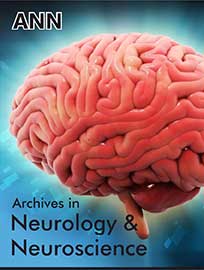 Review Article
Review Article
Primary Progressive Aphasia: Diagnosis and Contribution of Graphic Markers
Alexandra PLONKA1,2, Aurélie MOUTON3, Valeria MANERA1,2 and Auriane GROS1,2
1CoBTeK (Cognition Behavior Technology) Laboratory, France
2Centre Hospitalier Universitaire, Centre Mémoire Ressources et Recherche, France
GROS Auriane, Université Côte d’Azur, Department of Speech Therapy, France.
Received Date: December 17, 2019; Published Date: January 06, 2020
Abstract
Primary Progressive Aphasia (PPA) is a neurodegenerative disease characterized by a foreground linguistic deficit that extends to other cognitive functions. Structural and cognitive impairments depend of the PPA subtype. Different pathological causes can lead to PPA, such as frontotemporal dementia (FTD) or Alzheimer disease (AD). An early differential diagnosis between the different aetiologies seems crucial to set up an appropriate care but remains difficult to make, according to the several diagnosis changes that can occur. Moreover, non-pharmacological interventions such as speech therapy have proven their usefulness in compensating and maintaining functional communication and the use of graphical parameters have shown a significant handwriting difference between several diseases such as Alzheimer’s disease (AD) or Parkinson’s disease (PD). In this respect, it would be interesting to take graphic parameters into account within the framework of a classification of parameters characteristic of the neurodegenerative diseases.
Keywords: Primary Progressive aphasia; Diagnosis; Graphic markers
Abbreviations: PPA: Primary Progressive Aphasia; PPA-G: Agrammatic subtype of Primary Progressive Aphasia; PPA-S: Semantic Subtype of Primary Progressive Aphasia; PPA-L: Logopenic Subtype of Primary Progressive Aphasia; SD: Semantic Dementia; AD: Alzheimer’s Disease; FTD: Fronto Temporal Dementia; PD: Parkinson Disease
-
Gros, Plonka, Mouton, Manera. Primary Progressive Aphasia: Diagnosis and Contribution of Graphic Markers. Arch Neurol & Neurosci. 6(2): 2020. ANN.MS.ID.000633
-

This work is licensed under a Creative Commons Attribution-NonCommercial 4.0 International License.






